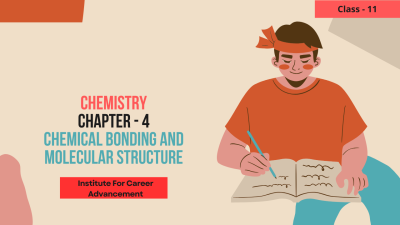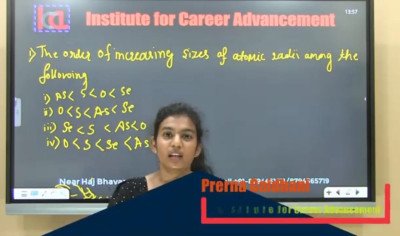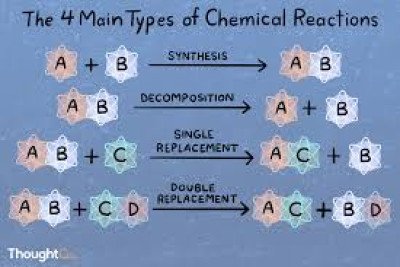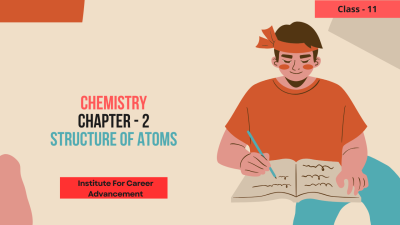Course description
Ever wondered why iron rusts, but gold stays shiny? The answer lies in the fascinating world of redox reactions (reduction-oxidation reactions) explored in Class 11 chemistry! Get ready to witness a captivating dance of electrons, where elements change their chemical identity through electron transfer.
The Electron Shuffle:
At the heart of redox reactions lies the movement of electrons between reacting species. You'll delve into the concept of oxidation state, a number assigned to an element that reflects the number of electrons it has gained, lost, or shared in a compound. In a redox reaction, elements undergo a change in oxidation state due to electron transfer.
Oxidation vs. Reduction: Two Sides of the Coin:
Oxidation and reduction are like two sides of the same coin in a redox reaction. Oxidation signifies the loss of electrons by an element (increases its oxidation state), while reduction represents the gain of electrons (decreases its oxidation state). It's like a game of hot potato – one element loses electrons (gets oxidized), while another gains them (gets reduced).
Identifying the Redox Shuffle:
Master the art of recognizing redox reactions! You'll learn to identify them based on the changes in oxidation states of elements involved. By analyzing these changes, you'll be able to spot the electron transfer happening behind the scenes.
Balancing the Electron Flow:
Redox reactions involve a balanced transfer of electrons. You'll explore a systematic approach to balance redox equations, ensuring the number of electrons lost by one element is equal to the number gained by another. This ensures the reaction adheres to the law of conservation of charge.
A World of Redox Reactions:
The world of redox reactions is diverse! Depending on your specific curriculum, you might explore different types, including:
Combination reactions: Two elements come together to form a compound (e.g., sodium and chlorine forming sodium chloride).
Decomposition reactions: A compound breaks down into simpler substances (e.g., thermal decomposition of calcium carbonate).
Displacement reactions: A more reactive element displaces a less reactive element from a compound (e.g., iron displacing copper from copper sulfate solution).
Disproportionation reactions: A single element undergoes both oxidation and reduction simultaneously (e.g., decomposition of hydrogen peroxide).
Beyond the Course:
Understanding redox reactions is crucial for various future chemistry topics. You'll encounter them in:
Electrochemistry: Studying the relationship between electricity and chemical reactions (redox reactions are at the heart of batteries and fuel cells).
Metallurgy: Extracting metals from their ores often involves redox processes.
Biochemistry: Numerous biological processes, like cellular respiration, involve electron transfer through redox reactions.
কখনও ভেবে দেখেছেন কেন লোহার মরচে পড়ে, কিন্তু সোনা চকচকে থাকে? এর উত্তর একাদশ শ্রেণীর রসায়নে অন্বেষণ করা রেডক্স প্রতিক্রিয়াগুলির (হ্রাস-জারণ প্রতিক্রিয়া) আকর্ষণীয় জগতে রয়েছে! ইলেকট্রনের একটি চিত্তাকর্ষক নৃত্য প্রত্যক্ষ করার জন্য প্রস্তুত হোন, যেখানে মৌলগুলি ইলেক্ট্রন স্থানান্তরের মাধ্যমে তাদের রাসায়নিক পরিচয় পরিবর্তন করে।
ইলেক্ট্রন শাফেলঃ
রিডক্স প্রতিক্রিয়ার কেন্দ্রবিন্দুতে রয়েছে প্রতিক্রিয়াশীল প্রজাতির মধ্যে ইলেকট্রনের চলাচল। আপনি জারণ অবস্থার ধারণাটি অনুসন্ধান করবেন, একটি উপাদানকে নির্ধারিত একটি সংখ্যা যা একটি যৌগে অর্জিত, হারিয়ে যাওয়া বা ভাগ করা ইলেকট্রনের সংখ্যা প্রতিফলিত করে। একটি রেডক্স বিক্রিয়ায়, ইলেকট্রন স্থানান্তরের কারণে মৌলগুলি জারণ অবস্থায় পরিবর্তিত হয়।
অক্সিডেশন বনাম। হ্রাসঃ মুদ্রার দুটি দিকঃ
রেডক্স বিক্রিয়ায় জারণ এবং হ্রাস একই মুদ্রার দুটি দিকের মতো। জারণ একটি মৌল দ্বারা ইলেকট্রনের ক্ষয়কে বোঝায় (তার জারণ অবস্থা বৃদ্ধি করে) যখন হ্রাস ইলেকট্রনের লাভকে বোঝায়। (decreases its oxidation state). এটি গরম আলুর খেলার মতো-একটি উপাদান ইলেকট্রন হারায় (জারিত হয়) এবং অন্যটি সেগুলি লাভ করে। (gets reduced).
রেডক্স শাফেল শনাক্ত করাঃ
রেডক্স প্রতিক্রিয়া শনাক্ত করার শিল্পে দক্ষতা অর্জন করুন! জড়িত উপাদানগুলির জারণ অবস্থার পরিবর্তনের উপর ভিত্তি করে আপনি সেগুলি সনাক্ত করতে শিখবেন। এই পরিবর্তনগুলি বিশ্লেষণ করে, আপনি পর্দার আড়ালে ঘটছে এমন ইলেক্ট্রন স্থানান্তর লক্ষ্য করতে সক্ষম হবেন।
ইলেকট্রন প্রবাহের ভারসাম্য বজায় রাখাঃ
রেডক্স বিক্রিয়ায় ইলেকট্রনের ভারসাম্যপূর্ণ স্থানান্তর জড়িত। আপনি রেডক্স সমীকরণের ভারসাম্য বজায় রাখার জন্য একটি নিয়মতান্ত্রিক পদ্ধতি অন্বেষণ করবেন, যাতে একটি উপাদান দ্বারা হারিয়ে যাওয়া ইলেকট্রনের সংখ্যা অন্য উপাদান দ্বারা প্রাপ্ত সংখ্যার সমান হয়। এটি নিশ্চিত করে যে বিক্রিয়াটি আধান সংরক্ষণের আইন মেনে চলে।
রেডক্স প্রতিক্রিয়াগুলির একটি বিশ্বঃ
রেডক্স প্রতিক্রিয়ার জগৎ বৈচিত্র্যময়! আপনার নির্দিষ্ট পাঠ্যক্রমের উপর নির্ভর করে, আপনি বিভিন্ন ধরনের অন্বেষণ করতে পারেন, যার মধ্যে রয়েছেঃ
সংমিশ্রণ বিক্রিয়াঃ দুটি উপাদান একত্রিত হয়ে একটি যৌগ গঠন করে। (e.g., sodium and chlorine forming sodium chloride).
পচন বিক্রিয়াঃ একটি যৌগ সহজ পদার্থে বিভক্ত হয়। (e.g., thermal decomposition of calcium carbonate).
স্থানচ্যুতি প্রতিক্রিয়াঃ একটি বেশি প্রতিক্রিয়াশীল উপাদান একটি যৌগ থেকে কম প্রতিক্রিয়াশীল উপাদানকে স্থানচ্যুত করে। (e.g., iron displacing copper from copper sulfate solution).
অসামঞ্জস্য প্রতিক্রিয়াঃ একটি একক উপাদান একই সাথে জারণ এবং হ্রাস উভয়ের মধ্য দিয়ে যায় (e.g., decomposition of hydrogen peroxide).
কোর্সের বাইরেঃ
ভবিষ্যতের বিভিন্ন রসায়নের বিষয়ের জন্য রেডক্স প্রতিক্রিয়া বোঝা অত্যন্ত গুরুত্বপূর্ণ। আপনি তাদের সাথে দেখা করবেনঃ
ইলেক্ট্রোকেমিস্ট্রিঃ বিদ্যুৎ এবং রাসায়নিক বিক্রিয়ার মধ্যে সম্পর্ক অধ্যয়ন (redox reactions are at the heart of batteries and fuel cells).
ধাতুবিদ্যাঃ তাদের আকরিক থেকে ধাতু উত্তোলনে প্রায়শই রেডক্স প্রক্রিয়া জড়িত থাকে।
জৈব রসায়নঃ কোষীয় শ্বাস-প্রশ্বাসের মতো অসংখ্য জৈবিক প্রক্রিয়া রেডক্স প্রতিক্রিয়ার মাধ্যমে ইলেক্ট্রন স্থানান্তরের সাথে জড়িত।



















